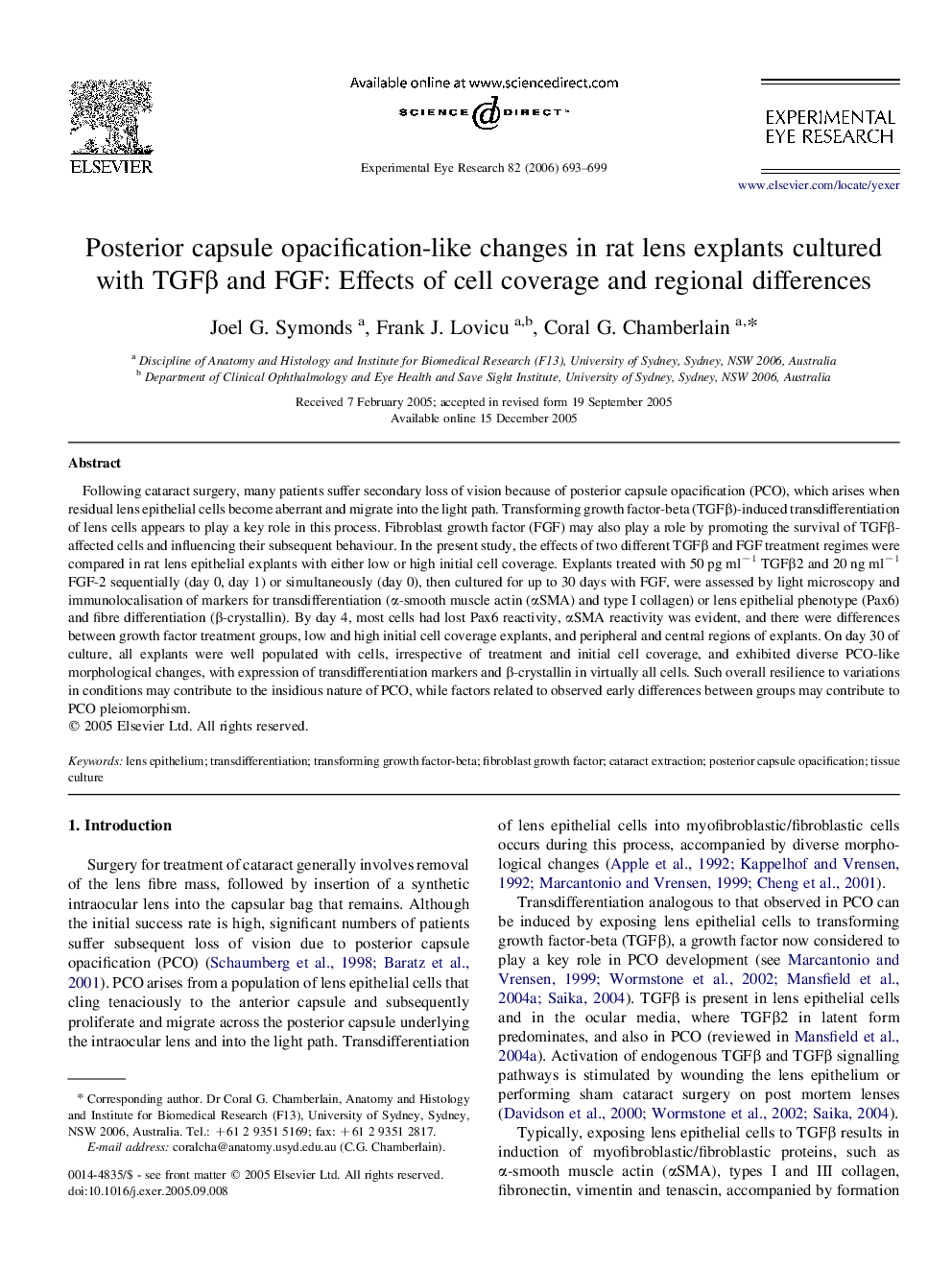| Article ID | Journal | Published Year | Pages | File Type |
|---|---|---|---|---|
| 4012616 | Experimental Eye Research | 2006 | 7 Pages |
Following cataract surgery, many patients suffer secondary loss of vision because of posterior capsule opacification (PCO), which arises when residual lens epithelial cells become aberrant and migrate into the light path. Transforming growth factor-beta (TGFβ)-induced transdifferentiation of lens cells appears to play a key role in this process. Fibroblast growth factor (FGF) may also play a role by promoting the survival of TGFβ-affected cells and influencing their subsequent behaviour. In the present study, the effects of two different TGFβ and FGF treatment regimes were compared in rat lens epithelial explants with either low or high initial cell coverage. Explants treated with 50 pg ml−1 TGFβ2 and 20 ng ml−1 FGF-2 sequentially (day 0, day 1) or simultaneously (day 0), then cultured for up to 30 days with FGF, were assessed by light microscopy and immunolocalisation of markers for transdifferentiation (α-smooth muscle actin (αSMA) and type I collagen) or lens epithelial phenotype (Pax6) and fibre differentiation (β-crystallin). By day 4, most cells had lost Pax6 reactivity, αSMA reactivity was evident, and there were differences between growth factor treatment groups, low and high initial cell coverage explants, and peripheral and central regions of explants. On day 30 of culture, all explants were well populated with cells, irrespective of treatment and initial cell coverage, and exhibited diverse PCO-like morphological changes, with expression of transdifferentiation markers and β-crystallin in virtually all cells. Such overall resilience to variations in conditions may contribute to the insidious nature of PCO, while factors related to observed early differences between groups may contribute to PCO pleiomorphism.
